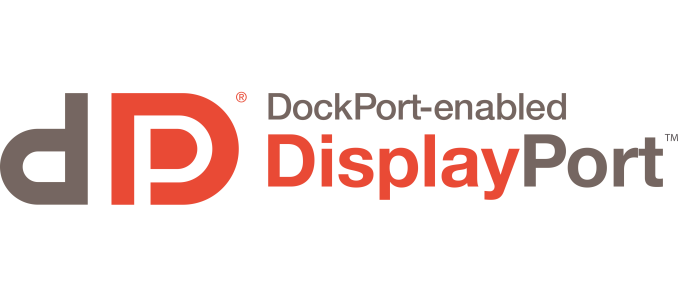VESA Releases DockPort Specification
With Computex now in full swing this week has and will continue to be a flurry of product and standard announcements. To that end and kicking off their Tuesday, the VESA has sent us a status update on DockPort, the organization’s combined display/data/power cable and interface standard.
The last time we talked to the VESA was at CES 2014. There, the organization announced that they were adopting AMD/TI’s Lightning Bolt specification as a VESA standard, and were in turn making it an official extension to the DisplayPort standard. At the time the DockPort specification was still in development, with a projected finalization of Q2’14.
Catching up to Computex then, the VESA is announcing that they have finished the DockPort specification on schedule and are releasing the final specification to their members today. Since the provisional release earlier this year DockPort has seen a specification bump – it now carries USB 3.1 rather than USB 3.0 – a relatively minor change since USB is fundamentally just another interface being carried over the much faster DisplayPort cabling. Otherwise this is the expected next step in the development of the standard. With the final specification in hand, device makers can begin final design and production of DockPort capable controllers and devices, though the VESA does note that device manufacturers are going to have to wait a bit for compliance testing as the compliance test is not yet complete.
Along with today’s announcement of the finalized specification, the VESA has also released the DockPort logo. The logo will be used to identify DisplayPort devices with DockPort capabilities, as the physical DisplayPort basis means that while DockPort devices can fall back to DisplayPort-only operation, their enhanced abilities only work when both the source and the sink are DockPort capable.
Meanwhile we’re still in the process of tracking down information on DockPort’s power delivery capabilities. Remember that DockPort will use new cabling (despite reusing DisplayPort itself), so there’s still the question about how much power source devices can provide and how much power the new cable can carry. The VESA’s own infographic lists “up to USB 3.1 speed charging power,” however as USB 3.1 has multiple power tiers it’s not clear which of those are going to be applicable.
Update: The VESA has since contacted us and stated that DockPort will be capable of carrying up to 80W
The VESA tells us that various vendors will be showing off early DockPort devices at Computex this week. If nothing else, we’d expect to see a further iteration of AMD’s Discovery concept tablet as that has been the DockPort proof of concept device thus far. Though if DockPort gains traction, then it would be the first of many such devices to make use of DockPort’s single-cable capabilities.



